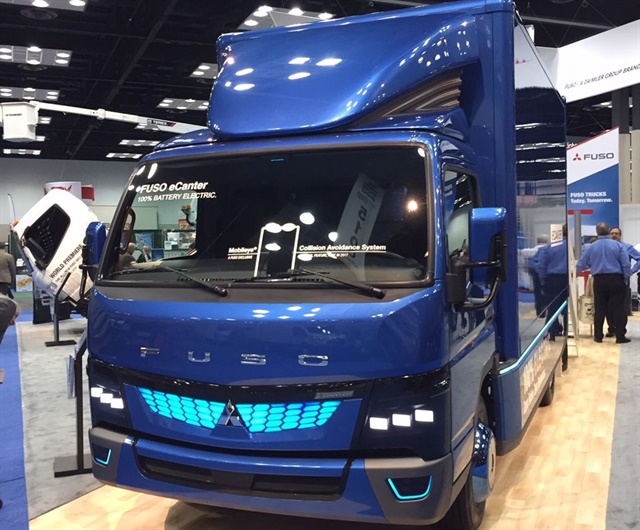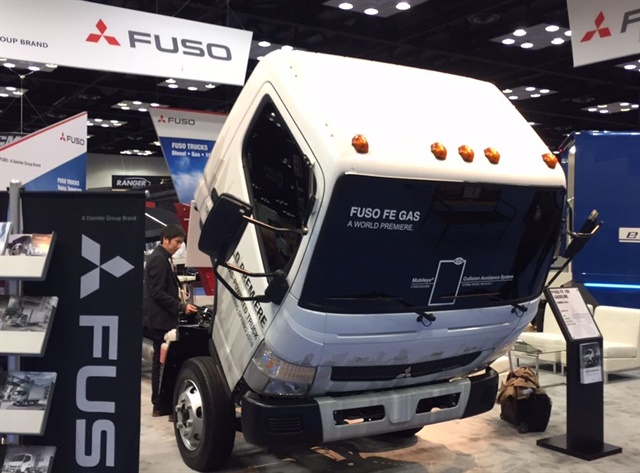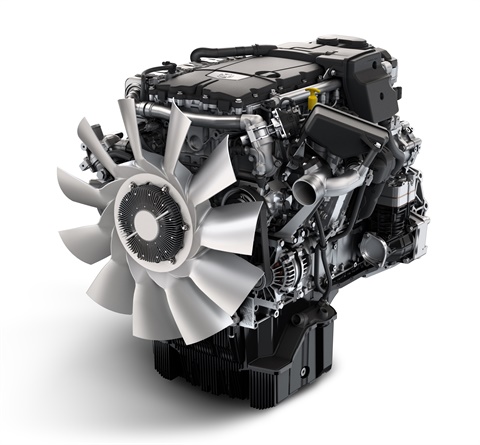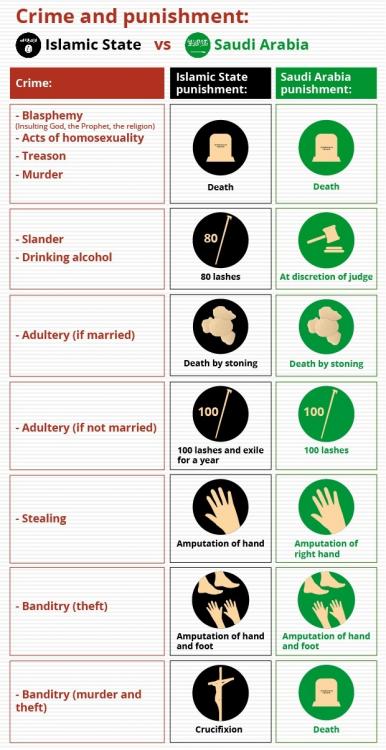
kscarbel2
Moderator-
Posts
18,873 -
Joined
-
Days Won
114
Content Type
Profiles
Forums
Gallery
Events
Blogs
BMT Wiki
Collections
Store
Everything posted by kscarbel2
-
FCA Press Release / March 14, 2017 .
-
Heavy Duty Trucking / March 15, 2017 Freightliner Custom Chassis (FCCC), Clean Energy Fuels, and Green Alternative Systems have partnered to provide a compressed natural gas fuel system on FCCC’s CNG MT-45/55 chassis. The chassis is used in the linen and uniform, parcel and home delivery, vending and food service, baking and snack delivery, and school bus industries. Green Alternative Systems will provide the new CNG fueling system for the chassis, which is powered by a 6.0L V8 engine with three available fuel capacities, including 35 GGE (gasoline gallons equivalent), 42 GGE or 52 GGE. The new CNG MT-55 chassis was on display at the NTEA Work Truck Show in Indianapolis. FCCC partnered with the two companies because of their experience and expertise in the natural gas vehicle industry. Clean Energy will provide fleets using the chassis with fueling agreements and access to its network of fueling stations. The company operates a network of over 550 public and private fueling stations across the country. Green Alternative Systems is a large commercial alternative fuel upfitter in North America, designing and installing natural gas, propane, hybrid, and electric fuel systems for the transit and fleet industries. GAS offers alternative fuel systems for buses, trucks, and commercial vehicles. .
-
Heavy Duty Trucking / March 15, 2017 Landi Renzo USA will begin offering a ship-through channel for customers to take delivery of converted compressed natural gas (CNG) trucks and vans utilizing Ford's existing distribution network from Ford's Ohio Assembly Plant, the company announced at the Work Truck Show in Indianapolis. Customers can now order a CNG-equipped F-450, F-550, F-650, or F-750 Super Duty truck by selecting the ship-through option on a dealer order form, in a new collaboration with a Landi Renzo installer located in Avon Lake, Ohio. The cost for this ship-through is $10, which is billed on the dealer invoice. The $10 includes having the truck pulled, upfitted, put back into Ford's transportation system, and delivered to the final destination. Ship-through capabilities cover all models built at Ford’s Ohio Assembly Plant, which include F-450 to F-750, as well as the E-Series cutaway van. .
-
Heavy Duty Trucking / March 15, 2017 UPS said it will invest more than $90 million in natural gas facilities and vehicles, including fueling stations, compressed natural gas trucks, and liquefied natural gas vehicles. The company plans to build an additional six CNG fueling stations and add 30 new CNG tractors and terminal trucks as well as 50 LNG vehicles to its alternative fuel and advanced technology fleet. “With more than 4,400 natural gas vehicles and a network of fueling stations, UPS has had great results using natural gas as an alternative fuel in our fleet,” said Mark Wallace, UPS senior vice president of global engineering and sustainability. “We know the importance of investing in natural gas globally for our fleet and the alternative fuel market. In 2016, we used more than 61 million gallons of natural gas in our ground fleet, which included 4.6 million gallons of renewable natural gas. This helped us to avoid the use of conventional gas and diesel, and decreased CO2 emissions by 100,000 metric tons.” Last year, UPS invested $100 million in CNG fueling stations and vehicles. The company currently operates 31 CNG fueling stations in Alabama, Arizona, California, Colorado, Georgia, Kansas, Kentucky, Louisiana, Nevada, Oklahoma, Pennsylvania, Texas, Virginia, Tennessee and West Virginia. It runs CNG vehicles in 38 states in addition to ones in Germany, the Netherlands, and Thailand. The six new CNG stations will be built in Ontario, California; Orlando, Florida; Salina, Kansas; Louisville, Kentucky; Greensboro, North Carolina, and Vancouver, British Columbia, Canada. Renewable natural gas will be used at the station in Ontario. UPS also purchased 50 additional LNG vehicles that were deployed in Indianapolis, Indiana; Chicago; Earth City, Missouri; and Nashville, Tennessee, where UPS has existing LNG stations. Since 2009, UPS has invested more than $750 million in alternative fuel and advanced technology vehicles and fueling stations globally. The company has driven over a billion miles since 2000 with the alternative fuel and advanced technology vehicles, which include natural gas, electric, hybrid and other types of powertrains. .
-
Cummins Improves MidRange Engine Lineup for 2017
kscarbel2 replied to kscarbel2's topic in Trucking News
Cummins puts more focus on midrange engine improvements Fleet Owner / March 14, 2017 Engine maker aims for better fuel economy and for super-low NOx producing natural gas options for non-attainment area operation. When it comes to midrange diesel engines, the focus at Cummins Inc. is how to keep bringing the “best of both worlds” together, according to Jeff Caldwell, the company’s executive director of North American truck OEMs – more fuel economy and more performance, all within the same package. A different set of demands, however, is present within the natural gas segment of the midrange engine market, noted Rob Neitzke, president of Cummins Westport Inc. (CWI), during a press conference here during the 2017 National Truck Equipment Association (NTEA) Work Truck Show: how to deliver a super-low oxides of nitrogen (NOx) emitting truck engine that doesn’t sacrifice on power while helping “non-attainment” areas meet Clean Air Act (CAA) air pollution targets. “There’s a scattershot of place across the U.S., largely in major metropolitan areas, that are having trouble meeting the 8-hour ozone targets established by the CAA for 2023 and 2030,” Neitzke explained to Fleet Owner. “Looking at their glide path, we can provide an engine that offers 90% NOx [emission] improvement that changes their compliance direction while still providing diesel-comparable power,” he said. “One of the myths of the natural gas engine is that it’s a ‘bridge’ technology to something else. Instead we’re saying it’s a solution to a problem right now.” On the pure diesel engine side, Cummins’ Caldwell noted that the company’s 2017 model B6.7 base engine is seeing an average improvement of 8.5% on efficiency ratings and 5% improvement in performance ratings over its 2013 model ISB6.7 engine. For some applications and duty cycles, specifically pickup and delivery, the efficiency ratings are up to a 13% gain in fuel economy versus the 2013 ISB6.7. "Our program started with a goal of delivering 7% better fuel economy on the efficiency ratings and 1% better fuel economy on the performance ratings over the 2013 product,” Caldwell noted. “As the program progressed, we found opportunities to tune and optimize the engine, delivering further efficiency, and allowing us to surpass initial expectations." Apart from base engine fuel economy enhancements, Cummins also has Stop-Start capability with the B6.7, which will provide additional fuel economy improvement of 3% to 15% by automatically shutting off the engine during idle time, resulting in reduced fuel consumption. The 2017 model B6.7 also comes with a newly-extended 3-year/unlimited-mile warranty in truck applications, Caldwell said. “The trick is how do I continue to gain fuel economy without losing performance,” he told Fleet Owner. “That’s why diesel still has a role in this industry; it is still the most effective way to make trucks more productive.” On the natural gas side of the ledger, Cummins Westport noted that its ISB6.7 G and the ISL G Near Zero engines are now in full production for bus, medium-duty truck and vocational applications. Yet CWI’s Neitzke said the ISL G Near Zero engine is the real “game changer” in the market – an engine that’s received emissions certification from both the Environmental Protection Agency (EPA) and the California and Air Resources Board (CARB) to meet the optional 0.02 g/bhp-hr Near Zero NOx emissions standards – some 90% lower than the 2010 EPA standard of 0.2 g/bhp-hr. "This engine offers customers the benefit of performance with the lowest emissions at a much lower cost than battery electric-vehicles,” Neitzke stressed. “It is zero-emissions technology at conventional propulsion system costs." Both the ISB6.7 G and ISL G Near Zero operate exclusively on compressed natural gas (CNG), liquefied natural gas (LNG) or renewable natural gas (RNG), and both use CWI’s proprietary spark-ignited stoichiometric combustion with cooled exhaust gas recirculation (SEGR) technology. In addition, the engines feature electronic controls with programmable features, a closed crankcase ventilation system and a maintenance-free Three-Way Catalyst (TWC) aftertreatment. “You’re getting electric-like emissions with traditional diesel-like response,” Neitske added to Fleet Owner regarding the ISL G Near Zero engine. “You can use the same technicians and almost the same maintenance processes and drop [the engine] into the same chassis space as a traditional diesel. It’s a fantastic low-emission solution and it’s in production today.” -
Fleet Owner / March 15, 2017 Ford announced updates to its broad commercial vehicle lineup and introduced programs dedicated to its fleet and commercial customers here at the 2017 National Truck Equipment Association (NTEA) Work Truck Show. “Ford is deeply committed to the work truck market,” said John Ruppert, Ford's general manager for commercial vehicle sales and marketing. “We are the only OEM to offer our vocational customers vehicles in every segment from Classes 1-7 and have sold more commercial vehicles every year for three decades than any other manufacturer." He added the work truck industry "is a very important part of our business, and we’re dedicated to continuing to develop new and improved vehicles, technology and support to help our customers get the job done." Ford also announced updates to its 2018 Transit van lineup and introduced an expansion of its Advanced Fuel Qualified Vehicle Modifier (QVM) program during its press event 2018 Transit Ford Transit expanded for 2018 with new features designed to reinforce its Built Ford Tough pedigree and help make it even more useful on the job, Ruppert said. The rearview camera that is standard on the Transit van and passenger wagon moves above the rear doors on medium- and high-roof models for 2018. It will remain next to the license plate on low-roof models. The full-size Transit van will also get a locking glove box as standard equipment, as well as a new rear door exit handle and rear LED [light emitting diode] cargo lamp switch. New optional equipment available for model year 2018 includes: Heavy-duty cargo area flooring Heavy-duty rear scuff plate kit Extended-length running boards Push-down manual parking brake Power-folding short-arm heated mirrors with turn signals AM/FM stereo with audio input jack, microphone and Bluetooth interface D-pillar assist handles for medium- and high-roof models Forged alloy dual rear wheel package Charcoal leather-trimmed, heated seat package “We’re just excited to have the Transit here,” John Scholtes, chief program engineer for commercial vehicles, told Fleet Owner. “It’s the market leader, and we’re just really pleased to have it here.” eQVM launch Ford also announced it has expanded its Advanced Fuel QVM program to include companies that develop and install electric and hydraulic hybrid powertrains so customers can get electrified and hydraulic hybrid work trucks that retain their original powertrain warranties. The Ford eQVM program kicks off with three developers – XL Hybrids, Motiv Power Systems and Lightning Hybrids. These companies offer electrification or hydraulic hybrid solutions for a range of Ford vehicles, including F-150, F-250 to F-550 Super Duty, F-650 and F-750 medium-duty trucks, Transit and E-Series vans and chassis, and F-53/F-59 stripped chassis. Medium-duty truck sales Ford announced it has sold more medium-duty trucks last year than in any year since 1997. In 2016, the first full calendar year since production began at its Ohio Assembly Plant in August 2015, Ford F-650 and F-750 sales were up 54% year-over-year, with total sales of 15,486 vehicles. “Customers are embracing our new medium-duty trucks,” said John Scholtes, Ford chief program engineer, commercial vehicles. “They appreciate how flexible the platform is – we offer a choice of gasoline or diesel powertrain, three body styles, a wide GVWR range, and almost limitless customization options to let them spec exactly the right trucks for even the toughest jobs.” The F-650 and F-750 lineup includes Regular Cab, SuperCab and Crew Cab body styles, as well as straight-frame, kick-up frame Pro Loader and a dedicated tractor model for heavy towing applications. Ford offers its 6.8-liter V10 with 320 horsepower and 460 lb.-ft. of torque available for both F-650 and F-750 models with the Ford-built TorqShift HD six-speed automatic transmission. According to Ford, its 6.7-liter Power Stroke V8 turbo diesel delivers standard 270 horsepower and 675 lb.-ft. of torque, plus available engine outputs of 300 horsepower with 700 lb.-ft. of torque and 330 horsepower with 725 lb.-ft. of torque. Ford Commercial Vehicle Center The new Ford Commercial Vehicle Center program includes more than 670 dealers nationwide that offer fleets vehicles, financing options and service support. Commercial Vehicle Center dealers offer a selection of in-stock Ford commercial vehicles, and use a proprietary diagnostic software, Commercial Vehicle Tools, to recommend vehicle specifications for a customer’s specific business needs. They offer test drives at customer locations for maximum convenience, as well as a range of unique fleet vehicle financing options and incentives. “To maximize customer vehicle uptime, Commercial Vehicle Center dealer service departments are open at least 55 hours per week, and new stocking programs help improve parts availability,” the OEM noted in a statement. “Ford’s new Commercial Advantage Rewards loyalty program lets customers earn a range of factory benefits that can be redeemed at any Commercial Vehicle Center location.” Photo gallery - http://fleetowner.com/equipment/ford-motor-co-nteas-work-truck-show .
-
Mitsubishi Fuso News at the NTEA Work Truck Show
kscarbel2 replied to kscarbel2's topic in Trucking News
Fuso unveils new gas-powered cabover, all-electric eCanter truck Fleet Owner / March 15, 2017 Mitsubishi Fuso announced it is developing a new gasoline powertrain for its FE Series medium-duty cabover trucks and launched its new electric truck, the eCanter, here at the 2017 NTEA Work Truck Show. According to the company Fuso’s FE130, FE160 and FE180 will be powered by a PSI-GMPT Vortec Series 6-liter V8 engine, coupled with an Allison 6-speed automatic transmission. The new V8 engine models will be the first Fuso vehicles to be assembled in the U.S., noted Jecka Glasman, Fuso’s president and CEO. The gas truck will be offered in Class 3 and 4, and as the industry’s only Class 5 gas-powered model, the company stated. Customer trials for the new FE Series gas trucks are scheduled to begin in fourth quarter 2017, with full market launch to follow in 2018 as 2019 model year. “While the new VortecV8 represents a robust new powertrain for us, we are happy to report that we have adapted these drivetrains to our standard cab-chassis configurations – so customers and upfitters will find the same familiar 33.5-in. wide frame, same body attachment capability, wheelbases, cab-to-axle dimensions, and box sizes as they’ve enjoyed with our low-cost-of-ownership turbocharged diesel cabovers,” according to Otto Schmid, Fuso’s director of product management. All-electric eCanter During Fuso’s press conference on Wednesday, Glasman announced Fuso’s eCanter will be available for a soft launch by the end of the year in North America. The eCanter is a 100% plug-in electric Class 4 work truck with a 15,995-lb. GVWR and a payload capacity of roughly 9,380 lbs. It ranges up to 100 miles, has a one-hour quick charge capability and a standard eight-hour overnight full charge. “All current population studies note that people are moving back to the cities,” Glasman explained. “It is going to be busy and crowded, but goods still need to be delivered. What better way to deliver goods than with a truck with zero emissions and zero noise pollution.” Asked whether low fuel prices would influence the company’s production of electric trucks, Schmid said: “In the cities we have complaints about noise and pollution so it doesn’t matter if fuel prices are higher or lower.” Going forward, Glassman added that Fuso’s parent company, Daimler Trucks Asia, has invested in electrification, which she explained will drive most of future production. Telogis telematics, collision avoidance Fuso also announced it has partnered with Telogis, a Verizon Company, to install Telogis telematics systems as a standard on all medium-duty, diesel cabovers. Telogis telematics capabilities will be integrated on all of Fuso’s future Class 3 through 5 turbocharged diesel commercial trucks. Fuso has also partnered with Mobileye to integrate its collision avoidance systems in their trucks. “We learned that safety is one of the biggest concerns that our fleet customers have,” Glasman explained. “We put the Mobileye system in fleet trucks for a month in silent mode then put them in after a month with drivers and we saw harsh braking and other risky behaviors reduced by 50% after a month of having the system in trucks.” Glasman added the Telogis system will provide fleet operators with improved safety, better logistics and more efficient operations. -
Mitsubishi Fuso News at the NTEA Work Truck Show
kscarbel2 replied to kscarbel2's topic in Trucking News
Mitsubishi Fuso Brings Electric eCanter to U.S. Heavy Duty Trucking / March 15, 2017 Mitsubishi Fuso Truck of America has introduced the eCanter battery-powered Class 4 truck, offering the first 50 units to a select group of customers by the end of the year, the company announced at the NTEA Work Truck Show in Indianapolis. The electric trucks will be made available in the U.S., Europe, and Japan as part of a two-year lease, allowing companies time to use the vehicle before trading up to the next generation. The company says the trucks will cost 15-20% more than comparable diesel models. The Class 4 truck has a 100-mile range, 15,995-pound Gross Vehicle Weight rating, and a 9,380-pound payload capacity. The batteries can be quick-charged within an hour at a DC charging station or over the course of eight hours using a 230-volt outlet. The vehicle will also have flexible battery options to allow customers that need less range than 100 miles to opt for fewer batteries and increase payload capacity. “We believe the eCanter will help us chart the future of medium-duty trucking in urban environments," said Jecka Glasman, Fuso president and CEO. "It delivers up to a 100-mile range, with zero emissions and zero noise pollution — what we call positive energy. We’ve had preliminary conversations with multiple customers and they are enthusiastic about the possibilities this new truck represents.” The electric motor generates 173 horsepower and 494 lb.-ft. of torque - more torque than the company’s V10 gasoline motor in its Class 6 truck, according to Mitsubishi Fuso. The motor is powered by six batteries, which the company says are preconditioned during charging to ensure the range stays consistent in cold and hot weather. The drivetrain is fitted to a standard 151.6-inch cab chassis that is 33.5 inches wide - similar to the company’s traditional diesel cabovers. This allows the vehicle to be fitted with the same body attachments as some current models - a plus for upfitters. The vehicle features two-stage electric regenerative braking system, electric HVAC, and a high-capacity Power Take Off for applications that need it. The Fuso eCanter was originally shown off last year by Daimler Trucks Asia at the IAA Commercial Vehicle Show in Hannover, Germany, aimed at urban delivery in the Southern California and New York City markets. "Better fuel economy is one aspect, but our customers are telling us how important it is to have a quiet truck in urban environments, said William Lyons, vice president of sales operations. "It is a big concern on quality of life in cities today. This truck addresses that." . -
Fuso Adds Gasoline V-8 to FE Series Cabovers Heavy Duty Trucking / March 15, 2017 Mitsubishi Fuso Truck of America premiered a new prototype V-8 gasoline powertrain for the company’s FE Series medium-duty cabovers at the NTEA Work Truck Show in Indianapolis. The engine is a 6-liter Vortec Series motor from GM coupled to an Allison 1000 six-speed automatic transmission and it will be available on the FE130, FE160 and FE180 models. It will be the only gas truck in its class with Power Take Off capabilities for auxiliary equipment, according to a company representative. “Fuso has put together this exclusive engine/transmission package to provide unmatched power and versatility for our customers, and the Class 5 FE180 will offer the largest payload available in a gas-powered medium-duty truck," said Jecka Glasman, Fuso's president and CEO. A trial run of trucks equipped with the new engine will be available in the fourth quarter of 2017. The V8 FE Series trucks will be the first Fuso vehicles assembled in the U.S. at the Freightliner Custom Chassis Corporation’s facility in South Carolina. The engines and transmissions will be built in the U.S. but the chassis, cabs, and axles will come from Europe and Japan. .
-
Daimler Unveils Detroit DD8 Medium-Duty Diesel Engine
kscarbel2 replied to kscarbel2's topic in Trucking News
I suspect Volvo will finally have to offer the UD (Nissan Diesel)-designed six-cylinder D8 (aka GH8) in the Granite MHD. There is also a four-cylinder D5 (aka GH5) version. -
Heavy Duty Trucking / March 15, 2017 Daimler Trucks North America and its Detroit brand unveiled the new Detroit DD8 medium-duty engine at the NTEA’s Work Truck Show in Indianapolis. Aimed at vocational truck markets, the Detroit DD8 is a 7.7L in-line, 6-cylinder medium-duty engine. It offers a horsepower range of 260 to 350 hp and a torque range of 660 to 1050 lb.–ft. The DD8 will expand on the Detroit medium-duty platform that was launched last year with the DD5. Daimler says the engine offers industry-leading fuel efficiency and maintenance intervals. In addition, the DD8 will launch with both engine and transmission power-take-off options required for many vocational applications. The DD8 will initially be available in the Freightliner M2106, 108SD and 114SD models. Expanded availability into additional DTNA products will come later, with future availability planned for Thomas Built Buses and Freightliner Custom Chassis. Vehicles equipped with the DD8 will feature Detroit Connect Virtual Technician remote diagnostic service. Virtual Technician helps fleets make informed maintenance decisions, so that they only service their vehicles when needed. In the case that a vehicle does need to go into the shop, Virtual Technician, with the backing of the experts at the Detroit Customer Support Center, provides access to in-depth information to get the vehicle repaired as accurately and quickly as possible, improving uptime. “The Detroit DD8 is ideally suited for the vocational applications across the Daimler Trucks North America family of products,” said Kary Schaefer, general manager, marketing and strategy, Daimler Trucks North America. “The medium-duty engine options are all about giving our customers added value when making their engine selections.” The Detroit DD8 is scheduled for availability with vehicle production beginning in February 2018, and targets a wide range of vocational applications, including utility/maintenance/repair service, pick-up and delivery, oil field, construction, logging, plow and dump, wrecking, refuse, fire/emergency and recreational vehicles. In November 2015, Detroit announced a $375 million investment to bring the manufacturing of both proprietary medium-duty engines to its manufacturing facility in Redford, Michigan. The facility also produces the Detroit heavy-duty line of engines, the DT12 automated manual transmission and its complete offering of Detroit axles. Related reading - https://www.bigmacktrucks.com/topic/46262-daimler-enters-medium-duty-engine-market-with-dd5/#comment-340768 .
-
Isuzu Sets Production, Ordering for Class 6 Cabover Heavy Duty Trucking / March 14, 2017 Isuzu Commercial Truck of America (ICTA) will begin production of its 2018 FTR Class 6 cabover in May and start taking orders for the medium-duty truck in April, the company announced at the Work Truck Show in Indianapolis. Spartan Motors is assembling the 2018 FTR at its Charlotte, Mich., assembly plant that spans 85,000 square feet. The vehicle will retail for $82,180, the manufacturer announced. "This truck's combination of low-cab-forward design and Class 6 GVWR gives it fantastic maneuverability and visibility along with the ability to carry more cargo than a conventional Class 6 truck," said Shaun Skinner, president of ICTA. "Its four-cylinder diesel engine is environmentally friendly and gives the truck outstanding fuel efficiency. Its class-leading warranty gives its owners peace of mind." The FTR is powered by Isuzu's 4HK1-TC 5.2L turbocharged four-cylinder diesel engine that now carries a B-10 durability rating of 375,000 miles, meaning that 90% of engines should reach that odometer reading before needing an overhaul. When fitted in the FTR, the engine makes 215 hp and 520 lb.-ft. of torque at peak operation. Isuzu pairs the engine with an Allison 2550 RDS 6-speed automatic transmission with power take-off (PTO) capability. The front axle can take 12,000 pounds of capacity, while the rear axle is rated at 19,000 pounds. The GVWR is 25,950 pounds. The 11R22.5 tires are fitted to 22.5-inch steel wheels. Users can add an available 50- or 100-gallon fuel tank depending on which wheelbase they choose. The truck is available in eight wheelbase lenghts from 152 to 248 inches. It can accommodate bodies from 14 to 30 feet. .
-
EPA re-opens Mid-Term Evaluation Process for light-duty vehicle greenhouse gas standards 2022-2025 Green Car Congress / March 15, 2017 EPA Administrator Scott Pruitt and Department of Transportation Secretary Elaine Chao announced that EPA intends to reconsider its final determination issued on 12 January 2017 which recommended no change to the greenhouse gas standards for light duty vehicles for model years 2022- 2025. (Earlier post.) The EPA will reconsider that determination in coordination with NHTSA as part of a renewed Mid-Term Evaluation process. This process was established as a part of the 2012 final greenhouse gas emissions standards for model years 2017-2025, requiring EPA to determine no later than 1 April 2018 whether the greenhouse gas standards for model years 2022-2025 established are appropriate. In coordination with EPA, the DOT’s National Highway Traffic Safety Administration (NHTSA) is evaluating its fuel economy standards for that period. In accord with this schedule, the EPA intends to make a new Final Determination regarding the appropriateness of the standards no later than 1 April 2018.
-
Car & Driver / March 15, 2017 As cars increasingly become enmeshed in the Internet of Things, automakers for the past few years have offered drivers the ability to locate, unlock, and start their car with a smartphone or tablet. From the comfort of your couch, you can crank up the heat in your car or honk its horn with a tap on a touchscreen. But if it’s easy for you to control your vehicle using a mobile app, that also means if you bought it used, whoever owned it before you could still have some kind of access to it. In other words, someone else could still have the ability to locate, unlock, and start your car. Such was the case with Charles Henderson, a cybersecurity researcher at IBM, who happened to notice a major vulnerability in one automaker’s vehicle connectivity. A few years back, Henderson bought a convertible (the make and model of which he declined to name) and, as an early adopter to technology, was all too happy to connect his smartphone to the vehicle via the automaker’s mobile app. Then he had kids, so he sold the convertible in favor of a more family-friendly vehicle. “Four Years Later, I Still Have Access” Henderson said he removed all connected devices and wiped his personal information from the outgoing car. He reset the vehicle’s phone book and garage-door opener. The dealership, too, made sure the car was reset and that all keys were turned back in, said Henderson, who is global head of the IBM X-Force Red team of cybersecurity researchers. Henderson’s new car was the same brand as that previous convertible, so he loaded its information into the relevant mobile app, which would allow him to see the car’s location and remotely unlock and lock it, among other things. “And I notice my previous car was still there,” Henderson said. That wasn’t such a big deal, at least not at first, because he had just sold it a few hours before. “Then hours turned into days, days turned into weeks, weeks turned into months, and now, four years later, I still have access to my old car,” Henderson said. “As a vulnerability researcher, this is a problem.” Not that one needs to be a vulnerability researcher to see the potential for trouble. Henderson ultimately had to go to a dealership to have the vehicle removed once and for all from the app. Out of curiosity, he tried four major brands—again, declining to name them—and said they all had similar flaws. Several Ways to Disconnect A trip to the dealership may no longer be necessary, at least according to automakers that responded to our questions about their connected-vehicle mobile apps. They all described to us various ways the app can be disconnected when the user sells the vehicle without relying on a dealer to do so. In some cases, the terms and conditions of the agreement actually demand that the seller give notice of an impending change of ownership. Not many people read that fine print, of course, but in the case of General Motors and OnStar, for example, user terms say that if you sell or transfer your vehicle, “you must notify us by pressing the blue OnStar button” or by calling an 800 number, and “you must stop using” the connected-app services for that car or truck. “The seller does not have to go to the dealer,” GM spokesman for global connected customer experience Phil Colley told Car and Driver. “All they have to do is call.” Volvo, in the user terms of service for its On Call app, says the transferring owner “must promptly deactivate all links between any Volvo IDs and the Volvo car,” adding that the process is described in documents included with the vehicle but that the owner is “welcome to turn to your local Volvo dealer in case you need assistance with such deactivation.” Ford just launched remote-access capabilities through its FordPass on select vehicles in the United States last year, and untethering from the mobile app does not require a trip to the dealership, Ford smart mobility communications manager Angie Kozleski said. One way to disconnect is simply to log in to FordPass and delete the vehicle. Another way is to do a master reset of the vehicle’s Sync 3 system. “Our system does not rely on the dealer,” Kozleski told C/D. For the Hyundai Blue Link remote-access app, the vehicle can be disconnected simply by choosing to delete the vehicle at the app’s home page or by calling an 800 number, said Miles Johnson, Hyundai’s senior manager of quality, service, and technology. Hyundai’s app also has a system in place so that only the app user can can have access to the controls by including a user ID, a password, and a personal identification number (PIN). That PIN is needed to control more critical functions, such as unlocking doors and starting the vehicle. What about the Unwitting Buyer? But what about sellers who do not disconnect their vehicle from the app—because they don’t know how, they forget, or they’re simply ignorant about how intertwined these apps and cars are? And what about the buyer who doesn’t realize there is a remote-access app available and that someone else could still be using it? That gets a little dicier. The most obvious problem is that, if someone sold the car but was still connected to it, in some cases it would be relatively easy for them to steal it, using the mobile phone as a key fob to unlock and start the vehicle. Many vehicles, however, still require the actual key fob to be present before the car or truck can be driven away. But the fact that prior owners could still be tracking the vehicle’s whereabouts would be enough to give most people pause. In terms of making car buyers aware of the vehicle’s potential connectivity, Hyundai’s Johnson said the automaker also slaps a sticker with an 800 number on its Blue Link–equipped vehicles letting the new owners know it’s equipped and how to get it serviced. These remote services also can cost money—in the case of Blue Link, it’s $198 per year—so most owners call and disconnect when they no longer have the car or truck, Johnson said. Both Ford’s Sync 3 and GM’s OnStar have in-car alerts to let users know that the remote-access app is active. So if someone bought a used vehicle with connectivity but had done nothing to connect it to a mobile app, when a notification appeared on the infotainment screen saying the car was connected, the owner might be curious to figure out who was connected to the car. GM’s Colley said OnStar also checks in with owners every 90 days to confirm users, in addition to using registration data to verify ownership. Purging the Ghosts in the Machine Otherwise, car companies put the onus on owners to remove the car from, or add it to, the mobile app. “But the problem is, a lot of owners don’t consider it a connected or smart car,” Henderson said. “They just consider it a car.” Henderson’s advice to consumers buying a used vehicle with connected-car tech is to make sure there are no ghosts in the machine in the form of previous owners. He also said automakers should make it more intuitive for consumers to see who has access to the vehicle. “You can have the best security feature in the world, but if the user doesn’t know how to use it, it’s useless,” he said.
-
HENKELS & McCOY Group is joining in celebrating Ford’s 40 years of truck sales leadership as one of the automaker’s longest truck customer relationships dating back more than 94 years – further underscoring Ford trucks as the top choice for commercial fleets With a fleet of more than 3,000 Ford trucks across America, HENKELS & McCOY Group embraces the latest-generation F-Series trucks including F-150 with its high-strength, military-grade, aluminum-alloy body and the all-new Super Duty offering improved capability HENKELS & McCOY Group’s story figures into Ford’s yearlong 40 Years Tough celebration – marking F-Series as America’s best-selling truck for 40 straight years and best-selling vehicle for 35 consecutive years INDIANAPOlIS, March 15, 2017 – As part of its yearlong celebration of F-Series, America’s best-selling truck lineup for 40 straight years, Ford is also marking one of the longest customer relationships in the auto industry. HENKELS & McCOY Group, a utility and communications infrastructure contractor, has been a loyal Ford truck customer for more than 94 years. Way back in 1923, the burgeoning construction company put its confidence in Ford trucks. HENKELS & McCOY Group has since grown to more than 5,000 employees – trusting Ford trucks every mile of the way to help its workers get jobs done in projects across America. More than 3,000 F-Series trucks aid HENKELS & McCOY Group workers in constructing power, oil and gas pipeline, gas distribution and communications infrastructure across the country, as well as supporting project management and maintenance. The company relies on Ford’s entire truck range – everything from the efficient F-150, F-250 to F-550 Super Duty pickups and chassis cabs with utility upfit equipment, all the way up to the mighty F-650 and F-750 medium-duty vocational trucks. According to Bill Kokemor, director of fleet operations for HENKELS & McCOY Group, the firm’s long-term relationship with Ford is based on the strength of the automaker’s Commercial Vehicle Center program and outstanding customer service. “Ford trucks are tough, and have helped us work efficiently for 94 years,” says Kokemor. “The Ford dealerships and related facilities that maintain our equipment are outstanding, and that’s led to us having great uptime with our trucks.” Among the vehicles Ford provides the contractor are a fleet of F-150 trucks equipped with 2.7-liter EcoBoost® engine and high-strength, military-grade, aluminum-alloy body. These vehicles haul crews, tools and supervisors between work sites. Kokemor says when decommissioned, the trucks have very strong residual value. “This only adds to the value they provide our company overall,” he says. HENKELS & McCOY Group is in the midst of updating its Super Duty fleet to the latest-generation F-Series F-250 to F-750. These range from four-wheel-drive F-250 and F-450 trucks, all the way up to medium-duty F-750 chassis cabs, many of which get service/utility bodies, digger derricks and buckets installed. The Ford fleet is made up of 40 percent F-150 and 60 percent Super Duty trucks. “Since our first Super Duty arrived in 1999, we’ve found the best thing about this highly capable truck is its long-term dependability and ease of upfitting for our vocational fleet,” says Kokemor. “Upfitters really appreciate the clean chassis Ford produces, as well as the placement of the electrical and mounting equipment – which is located exactly where we need it most.” Kokemor attributes this convenience to Ford’s fleet advisory board that includes representatives from numerous industries who help Ford truck engineering and commercial vehicle teams design and develop their products to best serve fleet and commercial needs. Ford’s new driver-assist technologies are highly valued by HENKELS & McCOY Group, as well. Kokemor says the company tends to install all of the available driver-assist features that it can. “Ford’s camera systems and backup sensors, as well as its Blind Spot Information System with cross-traffic alert help our drivers avoid damaging their trucks on a daily basis, which leads to reduced accidents and money saved in the long run,” he says. Ford has long been instrumental in helping HENKELS & McCOY Group with the cost management that’s critical to the company meeting its goals and ultimately, its long-term growth. The introduction of Ford Motor Credit Company in 1959 provided a much-needed source of capital at a very pivotal time for the contractor. “In the 1960s, we were getting big providing installation services for telecommunications – stringing phone lines across America,” says Kokemor. “We needed trucks and fortunately, Ford Credit offered us the financing that was essential to us getting the equipment we needed to get the work done.” For details on Ford’s 40 Years Tough series, including more on the history and contributions of HENKELS & McCOY Group to building and maintaining America’s infrastructure, or to share your F-Series story, visit www.40YearsTough.com. .
-
Sold! GM offloads Opel onto PSA Peugeot Citroen
kscarbel2 replied to kscarbel2's topic in Odds and Ends
Automotive News / March 15, 2017 Fiat Chrysler Automobiles (FCA) CEO Sergio Marchionne said he has "zero interest" in pursuing a merger with Volkswagen AG, despite bringing up the possibility earlier this month. "I only said that if you were the No. 1 automaker in Europe and somebody combines with another automaker to become the second and gets very close to your position, your very first reaction is to distance the second again," Marchionne said Wednesday. "We are the only natural combination partner for somebody who wants to do that. If you were playing a chess board game, that's what you would do." Marchionne said he'd be open to listening to offers from VW CEO Matthias Mueller. "If he wants to come, he knows where I live," he said. "I didn't chase him and I have no intention of chasing him. But if I'm right on consolidation and the fact you need to build scale, we're the natural place to go for him. "I will not call Matthias. I have no interest." Marchionne was reacting to comments made by Mueller in Germany about FCA merger speculation on Tuesday. “There is no contact at this time between me and [FCA CEO Sergio] Marchionne,” Mueller said during a press conference in Wolfsburg. But Reuters later reported that Mueller, in a later discussion with German reporters, sent mixed signals on talks with FCA. "I am not ruling out a conversation," Mueller was quoted as saying. Marchionne has long advocated consolidation among automakers to share the costs of making cleaner and more technologically advanced vehicles and has repeatedly relayed his desire via the media. "It would be very helpful if Mr. Marchionne were to communicate his considerations to me too and not just to you," Mueller said Tuesday, speaking in German. "I am pretty confident about the future of Volkswagen, with or without Marchionne," he said. -
Trump ‘true friend of Muslims,’ Saudi prince says after meeting RT / March 15, 2017 Saudi Arabia's deputy crown prince is singing US President Donald Trump's praises after their meeting, calling him a "true friend of Muslims" and claiming the leader's immigration ban does not target Islam. Deputy Crown Prince Mohammed bin Salman met with Trump at the White House on Tuesday, in what his senior adviser deemed a "historic turning point" in US-Saudi relations. The adviser said in a statement that although Washington and Riyadh had previously "undergone a difference of opinion," the Tuesday meeting "put things on the right track, and marked a significant shift in relations." The two sides discussed Trump's controversial ban on citizens from six Muslim-majority countries, which does not include Saudi Arabia. "Saudi Arabia does not believe that this measure is targeting Muslim countries or the religion of Islam," the statement reads, noting that Riyadh believes the ban is merely aimed at preventing terrorists from entering the US. Trump has been repeatedly criticized for failing to put Saudi Arabia on the list, despite some of the 9/11 terrorists hailing from the country. Many claim it was omitted because Trump has business dealings in the Gulf kingdom which he didn't want to jeopardize. The release goes on to state that "President Trump expressed his deep respect for the religion of Islam, considering it one of the divine religions that came with great human principles* kidnapped by radical groups.” It calls Trump a "true friend of Muslims who will serve the Muslim World in an unimaginable manner," noting that the reality of the US president is different to how the media and others have portrayed him. Salman and Trump also discussed the 2015 nuclear deal between six world powers – including the US – and Iran. The prince appeared to agree with Trump, who has previously called the agreement "disastrous" and the "worst deal ever negotiated." The prince called the deal "bad" and "very dangerous," stating that it will merely hold Iran back for a "short period of time" when it comes to producing a nuclear weapon. The adviser's statement accused Iran of "trying to gain its legitimacy in the Islamic world by supporting terrorist organizations." Meanwhile, as Trump continues to push his plan to build a wall on the US-Mexico border, the two sides discussed Saudi Arabia's successful building of a fence along its border with Iraq, which, according to the statement, "led to preventing illegal entrance of individuals, as well as preventing smuggling operations." The talks are being seen as a positive change from Riyadh's often tumultuous relationship with the Obama administration, especially in the wake of the Iran nuclear deal. * The legal system of Saudi Arabia is based on Islamic Law (aka. Sharia Law) derived from the Quran. Wahhabism, a strict form of Sunni Islam, is today the dominant for of Islam in Saudi Arabia, and seemingly at the core of world's dilemma. Its barbaric corporal punishments include flogging, amputation and eye gouging. Capital punishments include death-by-stoning, crucifixion and beheading. ----------------------------------------------------------------------------------- "Saudi Arabia, I get along with all of them. They buy apartments from me. They spend $40 million, $50 million. Am I supposed to dislike them? I like them very much." Donald Trump Campaign Rally - Mobile, Alabama - August 21, 2015 .
-
US Navy officers investigated in ‘Fat Leonard’ scandal
kscarbel2 replied to kscarbel2's topic in Odds and Ends
-
US Federal Reserve raises interest rates to 1% in bid to hold off inflation The Guardian / March 15, 2017 The US Federal Reserve has sought to head off rising inflation with a third interest rate rise since the 2008 financial crash and the second in three months, taking the base rate from 0.75% to 1%. The central bank set aside concerns about the impact of higher interest rates on consumer spending to confirm analyst projections that it is prepared to increase rates several times this year to keep a lid on inflation as it rises above its 2% target level. The Fed’s chair, Janet Yellen, said a wide range of indicators showed the US economy was in rude health, allowing its interest rate setting committee to push rates back towards historically normal levels. Policymakers voted nine to one to raise rates. Speaking after the decision, Yellen said she had met Donald Trump’s treasury secretary, Steven Mnuchin, “a couple of times” but had only been “introduced” to the president himself. “I fully expect to have a strong relationship with secretary Mnuchin,” she said. “We had good discussions about the economy, about regulatory objectives, the work of the FSOC [Financial Stability Oversight Council] global economic developments, and I look forward to continuing to work with him.” She said she had had a very brief meeting with Trump “and appreciated that as well”. Earlier in the day the Department of Commerce said retail sales had inched up by 0.1% in February, and that they had been better than it had previously estimated in January. US interest rates The Department of Labor said consumer prices were 2.7% higher in February than a year earlier. After excluding the costs of food and energy, inflation was 2.2%. A housing market index from the National Association of Home Builders also surged to its highest level since 2005. US stock markets moved up on the news, rising 90 points in the minutes after the decision, and US crude rose 2%. The increases were modest following Yellen’s signals in December that interest rates were on an upward path. Investors were also caught out by Yellen’s bullish comments in the wake of the announcement and by projections showing that 11 of her 17 policymaking colleagues saw borrowing costs rising another three times in 2017. Dennis de Jong, the managing director of the currency trader UFX.com, said: “Given the bloating effect Donald Trump’s presidency has had on US inflation, it would have been more of a surprise had Fed Chair Janet Yellen not announced a rate hike at today’s Federal Reserve meeting. “Trump’s grand plans for American infrastructure spending have signalled an about-turn for US economic policy – after just one rate increase in ten years, we’ve now seen two in the space of three months, and plenty more are expected for 2017. “This all spells bad news for US borrowers, who will likely have to foot a larger bill over the coming months. With at least three more hikes on the cards by the end of the year, today’s news could hit many where it hurts the most – the pocket.” US CPI Some economists argue that weak wages and productivity growth in the US will limit the Fed’s rate increases to a handful before reaching a peak at around 2%. Gus Faucher, the deputy chief economist at the stockbroker PNC, said: “I think the concern, in terms of why the Fed is raising rates now, is that inflation is picking up. The unemployment rate is 4.7% and that’s putting upward pressure on prices.” He told the Guardian economic forces were acting against a return to interest rate levels of 4-5% seen before the 2008 crash. “We have slower labor force growth because of the ageing of the baby boomers, [and thus] slower productivity growth in terms of output per worker,” he said. “That has reduced the potential for long-run growth, it’s reduced inflationary pressures, and I think rates in the future will be lower than they have been in the past.” US retail sales Faucher also said further interest rate rises could dent consumer spending, which has come to rely on cheap loans. “I do think eventually that higher interest rates are going to have an impact on rates for car loans, so that may be a problem for automakers. It may be a problem for big-ticket durable items, home appliances, stuff like that.” There is a ceiling on those effects, though, and Faucher doesn’t think they will affect home loans. “There isn’t much bleed over into mortgage rates; it’s mostly the short-term borrowers,” he said. Fed policymakers are known to be concerned that the tax cuts and extra government spending Trump has demanded could overheat the economy and lead to a deep recession. Should that happen, the Fed will want to have substantial interest rates in place.
-
Fed increases interest rates as inflation pressures loom The Financial Times / March 15, 2017 The US central bank has raised short-term interest rates for only the third time since the financial crisis, stepping up the pace of tightening as policymakers grow increasingly confident that America’s enduring recovery will lift inflation. The Federal Reserve raised the target range for the federal funds rate to 0.75 per cent to 1 per cent, in a move that has come earlier than markets were expecting as recently as last month. Fed policymakers stuck with previous median projections that there will be a total of three increases in rates this year, defying predictions from some analysts that it would release a more aggressive set of rate-raising forecasts. One rate-setter — Neel Kashkari of the Minneapolis Fed — dissented from the vote for a rise, arguing in favour of unchanged rates. In new language, the Fed’s statement also stressed that its inflation target is symmetric, in an acknowledgment that price growth could surpass its 2 per cent target without forcing the central bank to clamp down precipitately. Treasury yields dived and the US dollar came under pressure immediately after the statement. The yield on the 10-year Treasury note, which moves inversely to price, fell by as much as 10.7 basis points to 2.5 per cent, its biggest intraday drop since November 9, the day after the US election. The 2-year yield was down 7.9 basis point to 1.297 per cent. The dollar index, which gauges the buck against a basket of half a dozen peers, was down by 1.1 per cent, as expectations of four rate rises were dashed. Federal funds futures pinned the probability of four or more increases at 18.9 per cent at midday on Wednesday, down from 24.5 per cent on Tuesday, according to Bloomberg data. Odds of a June rate rise also retreated to 47 per cent, down from around 60 per cent on Tuesday. Janet Yellen, the Fed chair, signalled in Chicago this month that the Federal Open Market Committee thought monetary policy has hit a turning point that would require rate rises to come more frequently than the once-a-year pace set in 2015 and 2016. In a press conference, Ms Yellen suggested that the Fed’s economic and policy outlook had not changed substantially since December and emphasized that she was not going to rush to judgment about the impact of changes to tax and spending policy by Congress. While some analysts expect looser fiscal policy to boost the US economy next year, Ms Yellen said “we have plenty of time to see what happens”. Among the factors that are underpinning the Fed’s confidence are employment and inflation data that are approaching its targets, a reduction for the time being in perceived risks overseas, and an ebullient mood in stock markets. In its post-meeting statement, the US central bank signalled it was getting more confident about inflation, noting that headline price growth has moved close to its 2 per cent objective, even if its favoured measure of core inflation remains lower. Highlighting “solid” job gains, the Fed’s statement also underscored an improvement in business investment compared with previous meetings. The risks to the outlook remain “roughly balanced” it said, mirroring recent language. However, as Fed officials’ economic forecasts showed, the Fed has by no means ditched its cautious approach to monetary normalisation, with its post-meeting statement reiterating guidance that further rate increases will be gradual. The so-called dot plot projections pointed to a quicker pace of tightening than the once-a-year speed set over the past two years, but the Fed forecasts remain shy of predictions by some forecasters that there could be four increases this year. The median interest rate projection for the end of 2017 was centred at 1.375 per cent — unchanged from December’s outlook. The forecast was centred at 2.125 per cent in 2018, also the same as December’s prediction, and at 3 per cent in 2019, a shade higher than before. The median projection for the long-run rate remained at 3 per cent. Fed policymakers’ forecasts for growth and inflation remained little changed, with growth tipped to be 2.1 per cent this year and next year, slipping to 1.9 per cent in 2019. Core inflation is set to be 1.9 per cent in 2017 and 2 per cent in the two following years. The possibility of looser fiscal policy emerging from Congress has triggered speculation that the central bank will have to further accelerate its rate-rising campaign, but a number of policymakers are insistent that they want to see firmer plans emerging from Congress before making a call on the impact of possible tax cuts on the economy. In her Chicago speech, Ms Yellen did not dwell on fiscal policy as she made the case for higher rates. Also looming on the horizon is also the question of when and how to start reducing the size of the Fed’s $4.5tn balance sheet. The Fed’s stockpile of assets is a legacy of the financial crisis interventions that a growing number of policymakers have said now needs to be discussed. In its statement, the Fed reiterated that it anticipates holding its balance sheet unchanged until normalisation of official rates is “well under way”.
-
Trump orders fuel economy rule review Reuters / March 15, 2017 President Donald Trump on Wednesday ordered a review of tough U.S. vehicle fuel-efficiency standards put in place by the Obama administration, handing a victory to auto industry executives and provoking criticism from Democrats and environmental groups. In a move widely seen as a preamble to loosening fuel standards, Trump told an audience of cheering union workers, he would "ensure that any regulations we have protect and defend your jobs, your factories," and promised he would encourage growth in the U.S. auto sector. "The assault on the American auto industry is over," Trump said, standing in front of a banner that read "Buy American-Hire American." Trump added that the White House is "setting up a task force in every federal agency to identify and remove any regulation that undermines American auto production." The backdrop and message underscored Trump's efforts to lock down support in industrial states such as Michigan that put him in the White House. Trump spoke at the site of the former Willow Run bomber factory in Ypsilanti, Michigan, which won fame for building an operational B-24 heavy bomber every 59 minutes during World War Two. Now, the site is being redeveloped as a testing ground for autonomous vehicles. At a roundtable with industry leaders Trump made clear he expected automakers to hire more Americans in return, a theme that dominated his election campaign. "We're going to do some wonderful work with you, but you're going to have to help us with jobs," he said. Trump's event was attended by around 1,000 people, including automotive executives, United Auto Workers union President Dennis Williams - who sat next to Trump - and workers from Detroit's "Big Three" automakers: General Motors, Ford and Fiat Chrysler Automobiles NV (FCA). Automakers lined up examples of vehicles they build in the United States for the president to see. Auto industry executives have said they are hopeful the Trump administration will pursue tax and regulatory policies that would benefit U.S. manufacturers. Reopening the fuel efficiency rules put in place by Democratic President Barack Obama days before he left office is one of the top items on the industry's agenda. Automakers, through their lobbying groups, have said the Obama rules were too expensive and could cost American jobs. "These standards are costly for automakers and the American people," said Environmental Protection Agency Administrator Scott Pruitt. After one participant in Wednesday's meetings mentioned environmental concerns, Trump said he agreed but did not want an "extra thimbleful of fuel" to get in the way of growth. In a meeting with top auto executives from U.S. and foreign automakers, Trump said the government needs to get out of the way of the auto industry building vehicles, a person who attended the meeting said. Automakers are wary of being seen as out of touch with environmental concerns, or unwilling to invest in new technology. Ford, for example, used its Twitter account on Wednesday to highlight previously announced commitments to develop electric vehicles. It could take a year for the review process to play out, and Wednesday's event was effectively a starting gun for intense lobbying efforts over how government policy will drive technology investment decisions in the auto sector. Critics like Democratic U.S. Senator Edward Markey of Massachusetts said Trump's move could hurt consumers. "Filling up their cars and trucks is the energy bill Americans pay most often, but President Trump's roll-back of fuel economy emissions standards means families will end up paying more at the pump," Markey added. The president is not seeking to revoke California's authority to set vehicle efficiency rules even stricter than federal rules, including mandated sales of electric vehicles, as part of this move, a White House official said. The official did not rule out seeking to withdraw California's authority in the future. Pruitt, an ally of the fossil fuel industry, would not commit during his Senate confirmation hearing to allowing California to continue its own clean vehicle rules. A group of 10 state attorneys general led by California and New York said on Wednesday they would fight attempts to weaken the rules. California’s attorney general late Tuesday filed legal papers in a federal court defending the Obama administration’s decision to finalize the determination in January. Barclays auto analyst Brian Johnson said in a research note that he expects the Trump administration review will lead to reductions in planned hikes in fuel efficiency standards after 2021. The Obama administration's rules, negotiated with automakers in 2012, were aimed at doubling average fleetwide fuel efficiency to 54.5 miles per gallon by 2025, although the real-world mileage figures would be lower. 'THOUGHTFUL AND COORDINATED' Automotive industry executives and lobbying groups were quick to praise the administration's announcement. "The Trump administration has created an opportunity for decision-makers to reach a thoughtful and coordinated outcome predicated on the best and most current data," said Mitch Bainwol, chief executive of the Alliance of Automobile Manufacturers, an industry lobbying group. Automakers have signaled they want the government to give manufacturers more credit toward achieving fuel efficiency targets for technologies such as "stop-start" systems that shut down a car’s engine at a traffic light. Regulators should also look at whether ride hailing and vehicle-to-vehicle communications systems designed to prevent accidents and alleviate road congestion could be counted toward the industry’s greenhouse gas emissions goals, the automaker group proposed in comments to the EPA last year. The group represents a dozen automakers, including GM, Ford and FCA. Under the 2012 agreement with the industry, the EPA was given until April 2018 to decide whether the standards were feasible under a "midterm review," but the agency moved up its decision to a week before Obama left office in a bid to maintain a key part of his administration's environmental legacy. An EPA analysis indicated that compared with previous rules, the 2025 standards would result in savings of between $1,460 and $1,620 over the lifetime of a vehicle and payback for new technology required to meet the new standards of around five years. The Obama administration said the rules would cost the auto industry $200 billion over 13 years, but save motorists $1.7 trillion over the life of the vehicles.
-
Ford Adds Electrification to Truck Modifier Program
kscarbel2 replied to kscarbel2's topic in Trucking News
Bob, Eaton discontinued its Hydraulic Launch Assist (HLA) hybrid power system in September 2014. http://www.eaton.com/ecm/groups/public/@pub/@eaton/@hyd/documents/content/pll_1006.pdf https://www.bigmacktrucks.com/topic/38789-lightning-hybrids-hydraulic-hybrid-system-patented/#comment-277473 -
In a perfect world.......Evans heavy duty waterless engine coolant...........http://www.evanscoolant.com/products/heavy-duty-coolant/ .
-
Everyone here has some good points. Everyone. But I suggest you all "step out of the box" for a moment, relax, and then continue. "I'm not paying for dead beat losers to get cheap healthcare" I completely agree. I don't want to support people, both the low AND wealthy upper class, who abuse the system. But my own largest concern at the end of the day is for the middle class American family. We've all watched the cost of health insurance go thru the roof and to the moon.
-
Sold! GM offloads Opel onto PSA Peugeot Citroen
kscarbel2 replied to kscarbel2's topic in Odds and Ends
Automotive News/Reuters / March 14, 2017 As to whether VW had any interest in discussions with Fiat Chrysler Automobiles about a possible merger, Volkswagen’s CEO Matthias Mueller said at the automaker’s annual press conference in Wolfsburg, “There is no contact at this time between me and [FCA CEO Sergio] Marchionne.” In a later discussion with reporters, Mueller said, "I am not ruling out a [future] conversation." "It would be very helpful if Mr. Marchionne were to communicate his considerations to me too and not just to you," Mueller told reporters.
BigMackTrucks.com
BigMackTrucks.com is a support forum for antique, classic and modern Mack Trucks! The forum is owned and maintained by Watt's Truck Center, Inc. an independent, full service Mack dealer. The forums are not affiliated with Mack Trucks, Inc.
Our Vendors and Advertisers
Thank you for your support!














